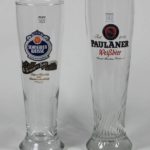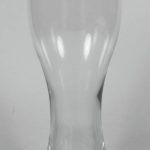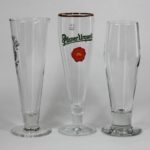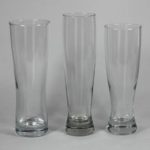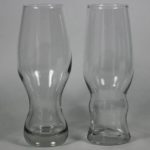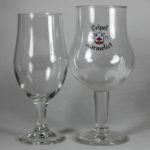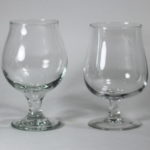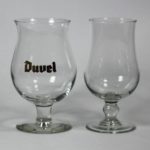
The Willi Becher is also known as the Willybecher or German-Style Pub Glass.
While not terribly popular here in the US this glass the go-to pint throughout Germany.
This German-style pint glass is similar to the shaker pint but about two-thirds of the way up its body the body tapers back inwards just slightly.
Some pilsner glasses have a similar design.
Benefits of a Willi Becher Glass
With it’s tall slender body and tapered head the glass shares a lot of function with the tulip pint glass. The glass shows off a beer’s clarity, color and head in a rather striking way. It’s tapered top also helps with head retention and trapping more elusive aromas inside the glass.
Larger versions of this glass also serve well for larger bottles of beer if you know you’ll be drinking at a “session” pace.
Other Notes
In the US, Willi Becher Glasses are typically 20 ounce glasses but you may also see them listed with sizes ranging from 0.2 l (roughly 5 ounces) up to 0.5 l (roughly 17 ounces) depending on the manufacturer.
What Beer Goes with a Willybecher Glass?
This glass pairs great with most german style ales and lagers so long as the ABV remains in the sub 6% region (give or take a bit.) I specifically like them for märzens and rauchbiers.
You can also use the Willybecker to sub in for a pint or seidel when drinking something packaged in a 20 ounce bottle.
Where can I buy Willi Becher Glasses?
If you’re still starting your collection the Libbey Craft Brew Sampler Beer Glass Set that we’ve reviewed previously includes one as a “Craft Pub Glass” and is a pretty decent set-starter. Outside of that you can also occasionally find them in Oktoberfest themed gift sets at your local liquor store.
If you’ve already got a decent collection of glasses I’d recommend just grabbing this in a four-pack of the Libbey glasses on Amazon. They’re marketed as the Craft Pub Glass and can be seen below.
You should expect to pay around $4 a glass.




